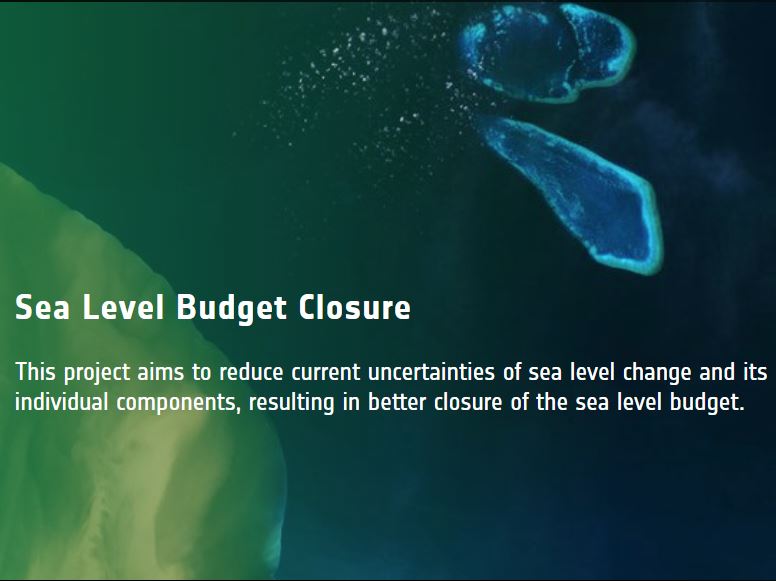Programme: ESA CCI+
Project title: Sea Level Budget Closure
Acronym: SLBC CCI+
Duration: 01/04/2023 – 31/03/2026
Project budget: € 200.000
ISMAR budget: € 70.000
Web site: https://climate.esa.int/en/projects/sea-level-budget-closure/
Summary:
Studying the sea level budget and the ocean mass budget with accurate climate records will bring major scientific benefits – adding confidence to satellite-based assessments of climate change, shedding light on missing or poorly known processes such as land hydrology that remain a challenge for Earth Observation, or heat uptake by the deep ocean. This will allow the key processes affecting sea level rise to be precisely quantified, leading to more informed model projections. Together with extreme events like storm surges and tropical cyclones, regional/local sea level changes represent a major threat in low-lying, highly populated coastal regions of the world, each of which affects coastal planning. The project is therefore a timely opportunity to add societal value and visibility to the CCI, allowing it to form the backbone of a milestone contribution to climate science.
This project intends to analyse in an integrative context recent results obtained by the ESA CCI programme for the sea level, glaciers and ice sheets Essential Climate Variables (ECV), with additional account for assessments of the ocean thermal expansion component which utilise the CCI Sea Surface Temperature ECV. Among other objectives, an important task will consist of assessing the quality of the CCI products involved in the sea level budget.
The new project phase (SBLC_cci+) aims to improve the closure of the global mean sea level budget by: 1) lengthening the time series, 2) assessing budget closure at global and regional scales, 3) providing an explanation of temporal and spatial variability at global and local scales. Depending on the availability of the various elements, the global sea level budget will be updated up to 2022/2023. In addition, the project will address the regional variability of sea level and sea surface temperature, and investigate the contributions of natural/internal climate variability and anthropogenic forcing (detection/attribution) to the associated spatial trends. By extending to regional spatial scales, we can pinpoint areas where the sea level budget does not close, resulting in a regional breakdown of the assessment of the items that accounts for a significant portion of the individual components used.
Contact person in ISMAR: andrea.storto@cnr.it
Partnership:
- Magellium
- LEGOS
- University Dresden (Germany)
- DATLAS,
- LOPS,
- University of Bristol (United Kingdom)
- University of Bologna (Italy)
- NERSC


